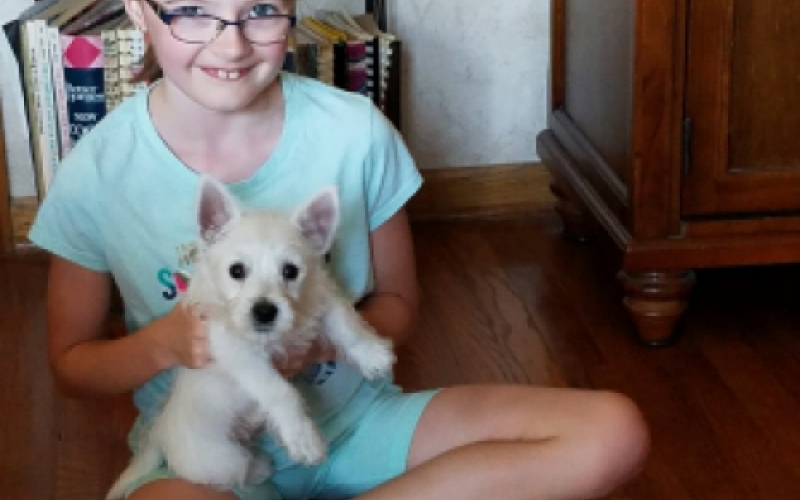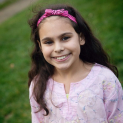
When Sophia (above) was just 4 years old, she had to have an 8-hour surgery to remove a tumor on her kidney, followed by 18 months of chemotherapy and radiation. Sophia had Wilms’ tumor, the most common kidney cancer in children.
The first signs of Wilms’ tumor—a painless swelling in the abdomen, blood in the urine, belly pain, high blood pressure or fevers—often seem to be symptoms of something much less scary. A pediatrician will recommend an abdominal ultrasound and then a diagnosis will be made. Treatment, which typically includes surgery, radiation and chemotherapy, begins. Most children, even those with higher stages of the disease can finish treatment knowing that they will most likely never battle Wilms’ tumor again.
However, being cured of Wilms’ tumor can come with a bevy of long-term side effects—loss of kidney function, bone and skeletal deformities, lung issues and more cancer.
With each year of remission, the risk of a secondary cancer increase, particularly for those who require radiation.

Dr. Julia Glade-Bender
“No matter what you do, you are exposing a fair amount of a child’s body to radiation and every little bit of radiation counts, particularly in children who have already declared themselves as a ‘tumor-former’,” said Dr. Julia Glade Bender, a member of the ALSF Scientific Advisory Board and an oncologist at New York-Presbyterian Hospital/Morgan Stanley Children’s Hospital.
Now, oncologists are studying the biological drivers of Wilms’ tumor to understand how to reach a 100% cure rate, while minimizing long-term side effects.
The cures and the side effects.
For years, the mainstay of treatment was surgery, chemotherapy and aggressive radiation. Clinical trials have shown that chemotherapy can be shortened and radiation can be eliminated for many children with Wilms’ tumor. For those who still require it, doses of radiation have been reduced, but not enough to completely avoid potential significant long-term health risks.
Radiation can leave a child susceptible to skeletal deformities—the radiated side of the spine can grow slower than the non-radiated side. Radiation can also cause restrictive lung disease later in life and hamper an individual’s ability to breathe. It also exposes a child to the risk of more cancer.
Every cancer is different.
Under the microscope, Wilms’ tumor cells look similar to other childhood cancer cells—round blue embryonic cells.
However, the microscope does not tell the whole story.
“Every cancer is different, because every child is different,” said Dr. Glade Bender. “The critical question is: which cure goes with which patient?”
The biology of Wilms’ tumor coupled with the biology of individual patients affected by disease are two areas of specific interest to researchers. They are working to understand the origins of the disease and also to understand why some cases of Wilms’ tumor are treatment resistant.
Researchers are performing retrospective studies and reviewing past cases of children who relapsed following frontline treatment. They are also working to study patterns of chromosomal changes that happen in children diagnosed with Wilms’ tumor.
Dr. Glade Bender and other ALSF-funded researchers see promise in the study of developmental therapeutics, which tests and examines new treatment agents in children after standard therapy has failed. These studies have the potential to identify new drugs that can help children who relapse and provide meaningful insights into offering safer treatments from the very beginning to future children affected by cancer.
“We won’t stop searching for cures, until we are at 100%,” said Dr. Glade Bender.
Learn more about Wilms’ tumor research and ALSF-funded projects, here.

